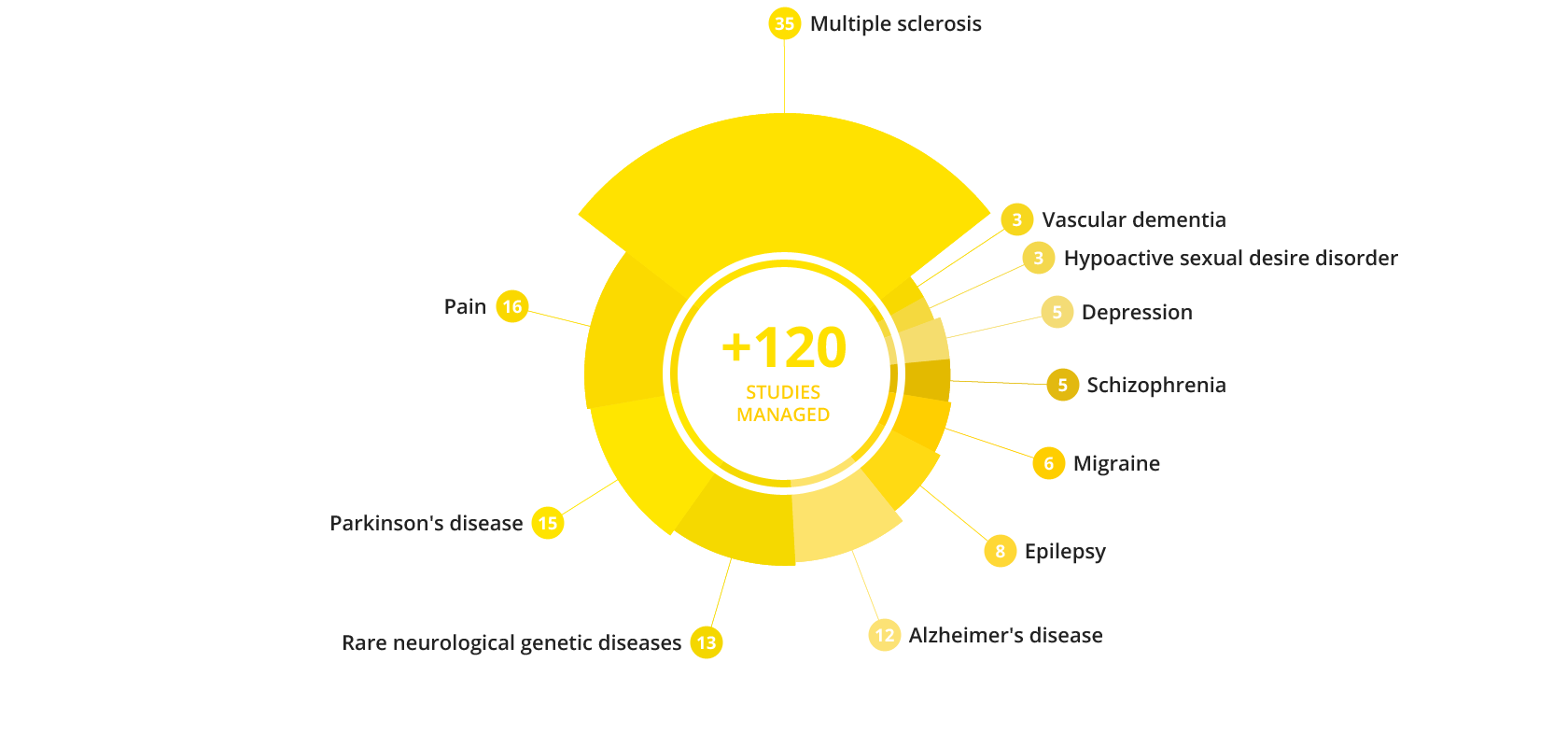CNS
The interest in neurological disorders has dramatically risen over the last years due to the increased aging of the world population
The Lancet Neurology journal in 2019 presented a study that estimates prevalence, incidence, deaths, and disability-adjusted life-years (DALYs; the sum of years of life lost [YLLs] and years lived with disability [YLDs]) by age and sex for 15 neurological disorder categories (tetanus, meningitis, encephalitis, stroke, brain and other CNS cancers, traumatic brain injury, spinal cord injury, Alzheimer’s disease and other dementias, Parkinson’s disease, multiple sclerosis, motor neuron diseases, idiopathic epilepsy, migraine, tension-type headache, and a residual category for other less common neurological disorders) in 195 countries from 1990 to 2016.
Globally, in 2016, neurological disorders were the leading cause of DALYs and second leading cause of deaths. The absolute number of deaths and DALYs from all neurological disorders combined increased whereas their age-standardised rates decreased between 1990 and 2016. The only neurological disorders that had a decrease in rates and absolute numbers of deaths and DALYs were tetanus, meningitis, and encephalitis. The four largest contributors of neurological DALYs were stroke, migraine, Alzheimer’s and other dementias, and meningitis. For the combined neurological disorders, age-standardised DALY rates were significantly higher in males than in females (male-to-female ratio 1·12 ), but migraine, multiple sclerosis, and tension-type headache were more common and caused more burden in females, with male-to-female ratios of less than 0·7.
As populations are growing and ageing, and the prevalence of major disabling neurological disorders steeply increases with age, governments will face increasing demand for treatment, rehabilitation, and support services for neurological disorders. The scarcity of established modifiable risks for most of the neurological burden demonstrates that new knowledge is required to develop effective prevention and treatment strategies. The burden of neurological disorders, as measured by the absolute number of DALYs, continues to increase and they are among the most prominent of today’s challenges for the pharmaceutical industry: they have indeed a huge impact on personal costs and overall quality of life.
In this scenario, monoclonal antibodies could be a promising tool against neurodegenerative diseases such as Alzheimer’s Disease. The expertise is now solid and thus pharmaceutical and biotech companies have the experience to move past problems such as the levels of uptake of the antibodies in the brain, the prevention of side effects and the anticipation of first symptoms.
Moreover, stem cell therapy is emerging for the treatment of such diseases because of the variety of benefits it could provide. Indeed, it has been used in research settings to treat neurological conditions, including stroke, multiple sclerosis, Parkinson’s Disease and Alzheimer’s Disease.
Overall, as these recent trends show, patients are more interested in non-invasive devices or therapies that can be implanted through a single surgical procedure, rather than a chronic pharmacological treatment that can often bring strenuous side effects or complications. Therefore, clinical trials are often evaluating medical devices, and in fact the number of medical devices approved by FDA in the last 2 years has been 10 times greater that the one of drugs. As of today, the largest portion of neurology devices is that of neurostimulation which can be an indication for spinal cord trauma, Parkinson’s Disease and epilepsy.
OPIS has managed over 120 studies in this therapeutic area and can therefore be considered a neurology-focused CRO, with the necessary expertise and know-how to provide an excellent service to the Sponsors that are tackling this ever-growing challenge in order to bring new therapies to the market.


Contact Us!
Whether you are Sponsor, a Clinical Research Professional or an Investigator contact us to learn more about how we can help.




